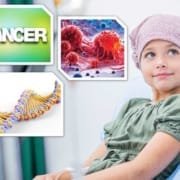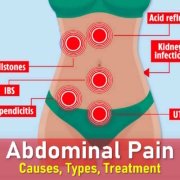Uterine Fibroids: Types, Symptoms, Treatment
What are Uterine Fibroids ?
Uterine fibroids are abnormal growths that develop in or on the uterus. These growths can vary in size, sometimes becoming quite large and causing severe abdominal pain and heavy periods. In other cases, fibroids may cause no symptoms at all. Typically, these growths are benign (noncancerous). The exact cause of uterine fibroids remains unknown.
About 1 in 3 women develop fibroids by the time they reach age 50. Fibroids are most common in women in their 40s and early 50s, but most women do not have any symptoms.
Types of Uterine Fibroids
Fibroids can develop in various locations within or on the uterus.
- Intramural Fibroids: These are the most common type, located within the muscular wall of the uterus. They can grow larger, potentially stretching the uterus.
- Subserosal Fibroids: These fibroids extend outside the uterine wall into the pelvis and can become quite large.
- Pedunculated Fibroids: When subserosal fibroids develop a stem or stalk that supports them, they are referred to as pedunculated fibroids.
- Submucosal Fibroids: Found beneath the inner lining of the uterus and growing into the uterine cavity, submucosal fibroids are less common but can cause heavy menstrual bleeding and difficulty conceiving.
What Causes Uterine Fibroids ?
The exact cause of uterine fibroids remains uncertain, but several factors may contribute to their development:
- Hormones. Estrogen and progesterone, hormones produced by the ovaries, play a key role in the menstrual cycle. They also stimulate the growth of the uterine lining, potentially promoting fibroid development.
- Family History. Genetics can influence the likelihood of developing fibroids. If close family members, such as a mother or sister, have had fibroids, you may be at higher risk.
- Pregnancy. During pregnancy, increased levels of estrogen and progesterone can lead to the rapid growth of fibroids.
Who gets Uterine Fibroids ?
Uterine fibroids are quite common, affecting about one in three women at some point in their lives. They are most frequently diagnosed in women aged 30 to 50.
Fibroids are observed more often in women of African-Caribbean descent and those who are overweight or obese, as excess body weight can increase estrogen levels. On the other hand, women who have had children generally have a lower risk of developing fibroids, with the risk decreasing further with each additional child.
Who is at Risk for Uterine Fibroids ?
Women are at greater risk for developing uterine fibroids if they have one or more of the following risk factors:
- Family history of fibroids
- Being over the age of 30
- Being of African-American descent
- Having a high body weight
- Onset of menstruation at an early age
- Use of birth control
- Vitamin D deficiency
- Having a diet higher in red meat and lower in green vegetables, fruit and dairy
- Drinking alcohol, including beer
- Pregnancy
Uterine Fibroids Symptoms ?
Uterine fibroids symptoms will depend on the location and size of the tumor(s) and how many tumors you have. If your tumor is very small, or if you are going through menopause, you may not have any symptoms. Fibroids may shrink during and after menopause.
Symptoms of uterine fibroids may include:
- Heavy bleeding between or during your periods that includes blood clots
- Increased menstrual cramping
- Pain in the pelvis and/or lower back
- Frequent urination
- Difficulty emptying the bladder
- Menstruation that lasts longer than usual
- Pain during intercourse
- Pressure or fullness in your lower abdomen
- Swelling or enlargement of the abdomen
- Constipation
How are Uterine Fibroids Diagnosed ?
You will need to see a gynecologist to get a pelvic exam. This exam is used to check the condition, shape and size of your uterus. You may also need other tests, which include:
- Ultrasound. An ultrasound uses high-frequency sound waves to create images of your uterus on a screen. This imaging technique helps your doctor visualize the internal structures of the uterus and detect any fibroids. A transvaginal ultrasound, where the ultrasound probe (transducer) is inserted into the vagina, can offer more detailed images as it is positioned closer to the uterus during the procedure.
- Pelvic MRI. This in-depth imaging testing produces pictures of your uterus, ovaries, and other pelvic organs.
- Hysteroscopy. For this, your doctor inserts a small telescope called a hysteroscope through your cervix into your uterus. Saline is injected into the uterus, expanding the uterine cavity and allowing the doctor to examine the walls of your uterus and the openings of fallopian tubes.
Uterine Fibroids Treatment ?
Your doctor will create a personalized treatment plan considering your age, the size of your fibroid(s), and your overall health. This plan may involve a combination of different treatments..
Watchful waiting
Many women with uterine fibroids experience no or only mild signs and symptoms that they can live with. If this applies to you, watchful waiting might be the most appropriate approach. Fibroids are non-cancerous and generally don’t affect pregnancy. They typically grow slowly or remain stable and often shrink after menopause when hormone levels decrease.
Medications
Your doctor may prescribe medications to regulate hormone levels and help shrink the fibroids. Gonadotropin-releasing hormone (GnRH) agonists, such as leuprolide (Lupron), will cause your estrogen and progesterone levels to drop. This will eventually stop menstruation and shrink fibroids.
Other options that can help control bleeding and pain, but will not shrink or eliminate fibroids, include:
- An intrauterine device (IUD) which releases the hormone progestin
- Over-the-counter anti-inflammatory pain relievers, such as ibuprofen
- Birth control pills
Surgery
For very large or numerous fibroids, surgery may be required. An abdominal myomectomy involves removing the fibroids from the uterus. This can be done through an abdominal incision, which provides direct access to the uterus, or via laparoscopic surgery, which uses small incisions and specialized instruments for a less invasive approach. Hysteroscopic surgery may be employed to remove submucosal fibroid by passing a small camera and instruments inside the uterine cavity.
In cases where other treatments are ineffective or if the condition worsens, a hysterectomy may be performed. This procedure involves removing the uterus entirely, which means you will no longer be able to become pregnant in the future.
Minimally Invasive Procedures
A newer and completely noninvasive surgical procedure is focused ultrasound surgery (FUS). You will lie down inside a special MRI machine that allows doctors to visualize the inside of your uterus. High-energy, high-frequency sound waves will be directed at the fibroids to destroy (ablate) them.
Uterine artery embolization (UAE) is a procedure in which tiny particles (about the size of grains of sand) are injected into the blood vessels that lead to the uterus. The particles cut off the blood flow to the fibroid and cause it to shrink. UAE can be used instead of hysterectomy or myomectomy to treat fibroids.
Similarly, myolysis shrinks fibroids using an electric current or laser, while cryomyolysis freezes the fibroids. Endometrial ablation involves inserting a special instrument into your uterus to destroy the uterine lining using heat, electric current, hot water, or microwaves.
Can Fibroids Turn into Cancer?
Fibroids are nearly always benign (non-cancerous). The risk of a fibroid turning cancerous is extremely low, occurring in fewer than 1 in 1,000 cases. When cancer does occur, it is called leiomyosarcoma, but this type of cancer typically does not originate from existing fibroids. Having fibroids does not increase the risk of developing leiomyosarcoma or other uterine cancers.
What if I Become Pregnant and Have Fibroids?
Pregnant women with fibroids may face certain complications, though most will have normal pregnancies. Common issues associated with fibroids during pregnancy include:
- Cesarean Section: Women with fibroids are six times more likely to require a C-section.
- Breech Presentation: The baby may be in a breech position, complicating vaginal delivery.
- Labor Progression: Fibroids can hinder the progression of labor.
- Placental Abruption: Fibroids may increase the risk of the placenta detaching from the uterus before delivery, reducing oxygen supply to the baby.
- Preterm Delivery: There is a slightly higher risk of delivering before the due date.
If you have fibroids and become pregnant, it is important to consult your obstetrician. They are well-versed in managing fibroids during pregnancy and can help monitor and address any potential issues.
What Can Be Expected in the Long Term?
The long-term outlook for fibroids depends on their size and location. Small fibroids that don’t cause symptoms may not require treatment. If you have fibroids and become pregnant, your physician will closely monitor your condition to ensure a healthy pregnancy. In most cases, fibroids do not lead to complications during pregnancy. If you plan to become pregnant and have fibroids, it’s important to discuss your situation with your doctor for personalized guidance and monitoring.











Leave a Reply
Want to join the discussion?Feel free to contribute!